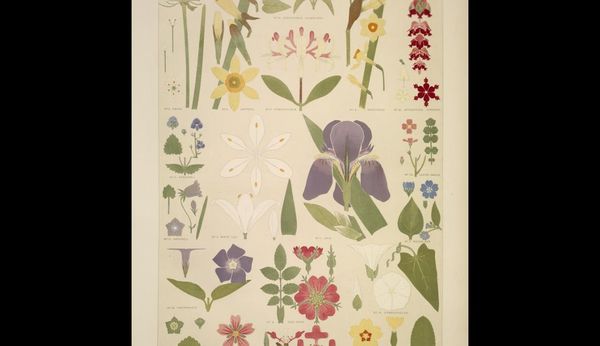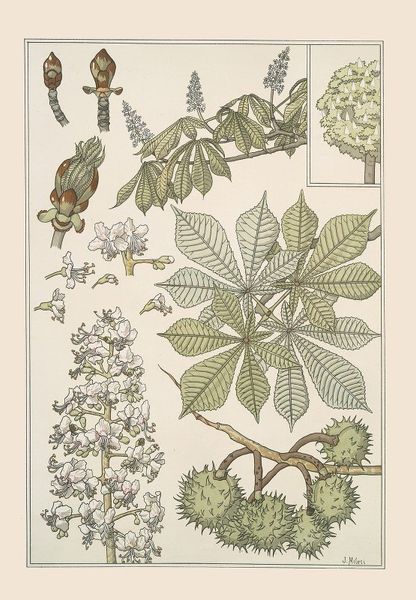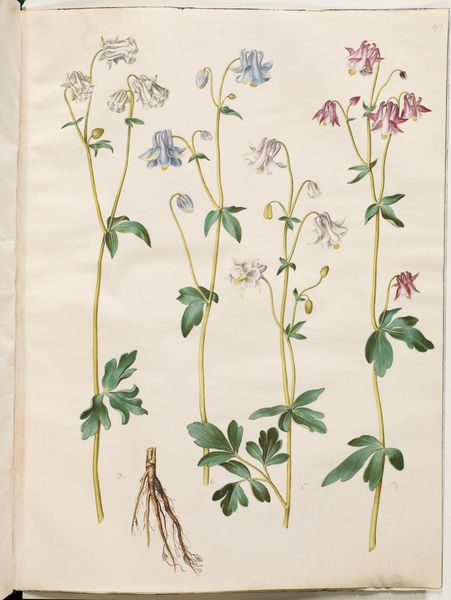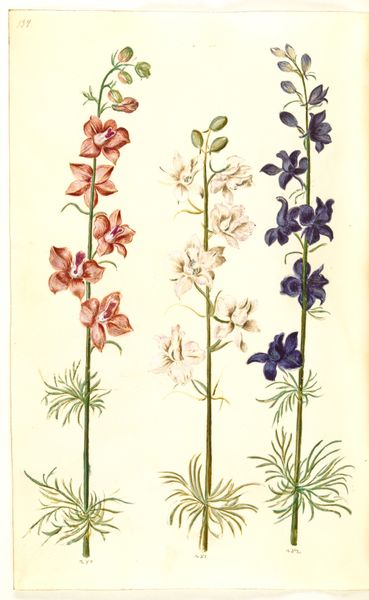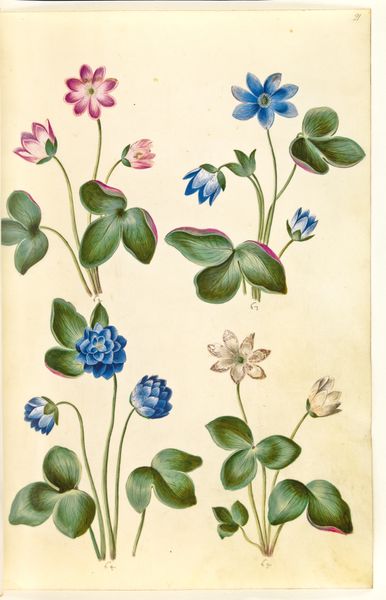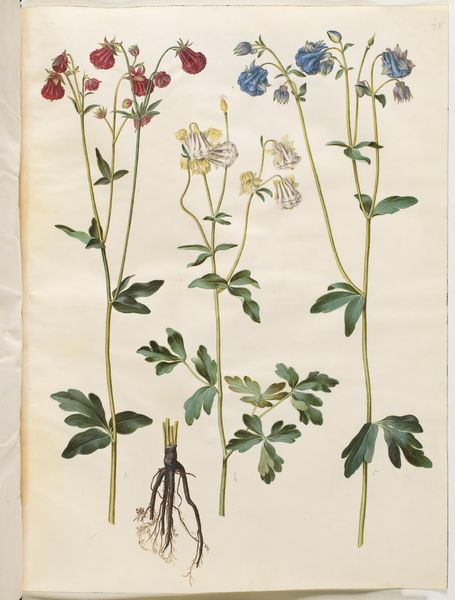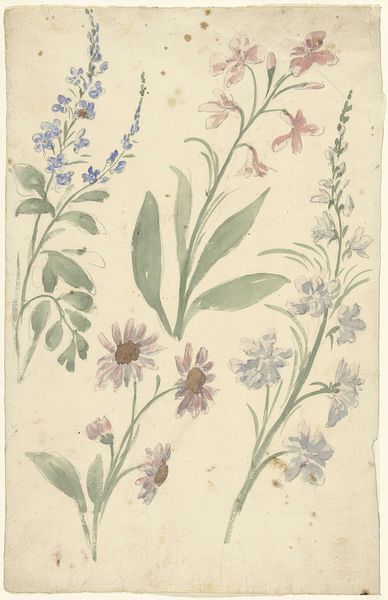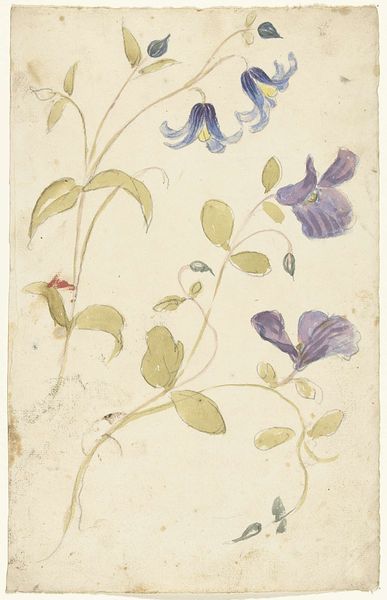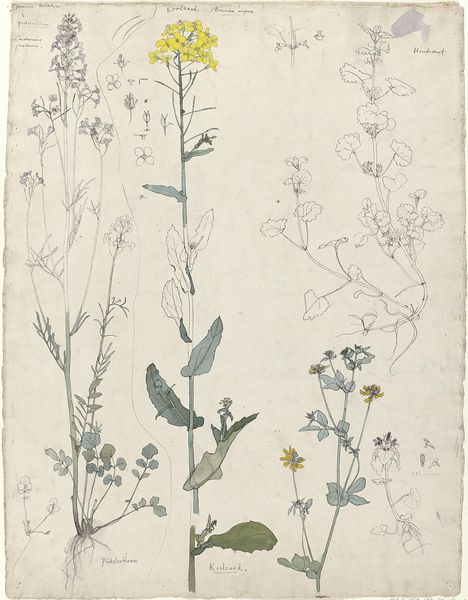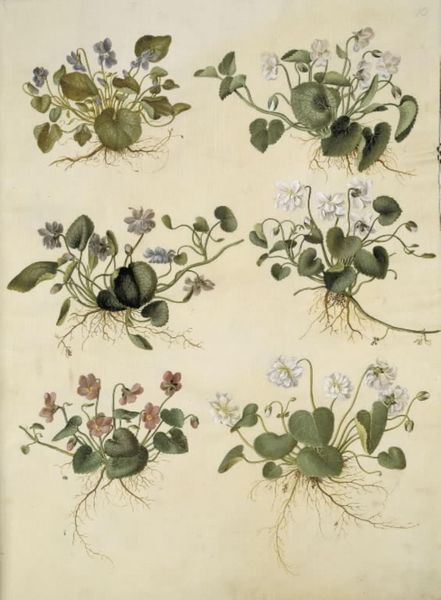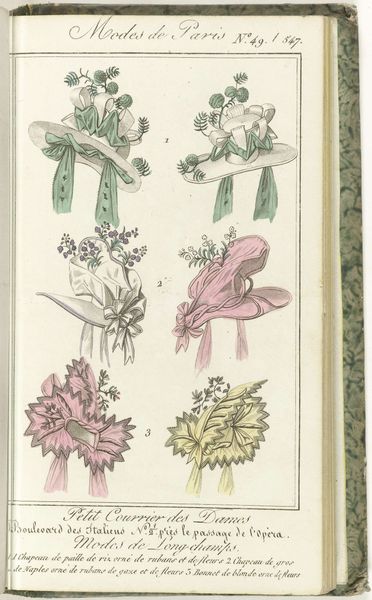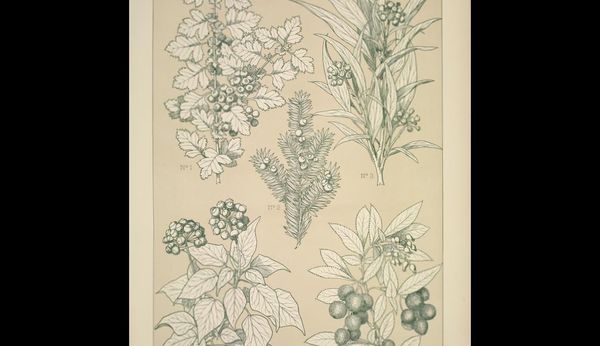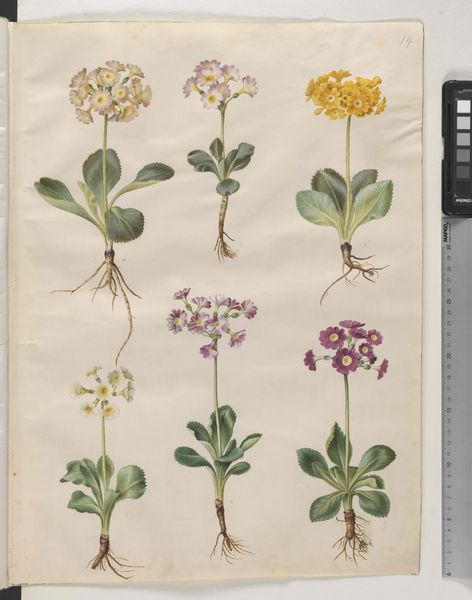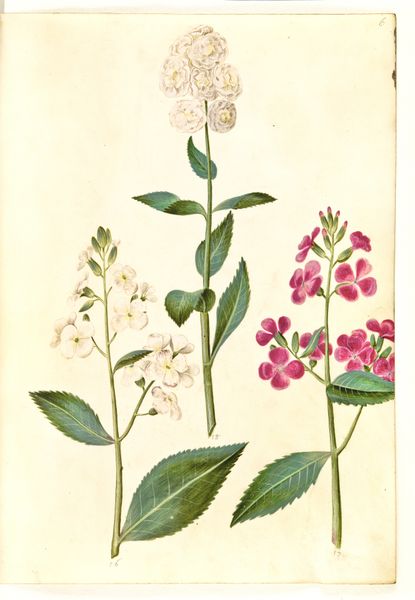
drawing, paper, ink
#
drawing
#
paper
#
ink
#
academic-art
#
modernism
Copyright: Public Domain: Artvee
Curator: Looking at "Leaves and flowers from Nature No.8" crafted in 1856 by Owen Jones, one can immediately note how Jones used ink and paper. Editor: Yes, it evokes the serenity of a botanical study, almost scientifically detached yet rendered with a delicate hand. Curator: I find it compelling to examine Jones's design methodology here. Consider the paper itself; it's more than a passive support. The material grain, the visible texture informs how the ink settles. There’s an undeniable intersection here of art and industrial processes. The way Jones’s drawings would eventually feed into the Victorian decorative art industry. Editor: Absolutely, and considering its historical context, Jones’ work embodies more than aesthetic beauty. As we delve into this array of specimens, it's hard not to view this project within a social frame; these floral studies stand as emblems of privilege, commodifying natural resources, when they can be used for medicinal purposes, food etc. Jones was very influenced by the decorative arts. How can his artwork challenge that power imbalance? Curator: His attention to detail suggests a reverence for nature, but it can also be read as part of a broader Victorian project: understanding, classifying, and therefore controlling nature's abundance. To delve deeper we need to explore this piece in terms of commodity fetishism and production for mass-consumption. Editor: His dedication to design reform is undeniable. Jones straddles different domains that we perceive of fine art and industrial applications, underscoring the interweaving relationships among Victorian science, nature and empire. But does it critique its own implication? Can Jones really create a drawing that advocates social equality from scratch? Curator: A good question! But remember, it provides an historical example. Jones does leave clues pointing at potential reform. It is fascinating that such seemingly unassuming images engage questions central to 19th-century art and the world we live in. Editor: It certainly presents us with much to contemplate—the aesthetic appreciation of natural specimens through an activist lens.
Comments
No comments
Be the first to comment and join the conversation on the ultimate creative platform.
